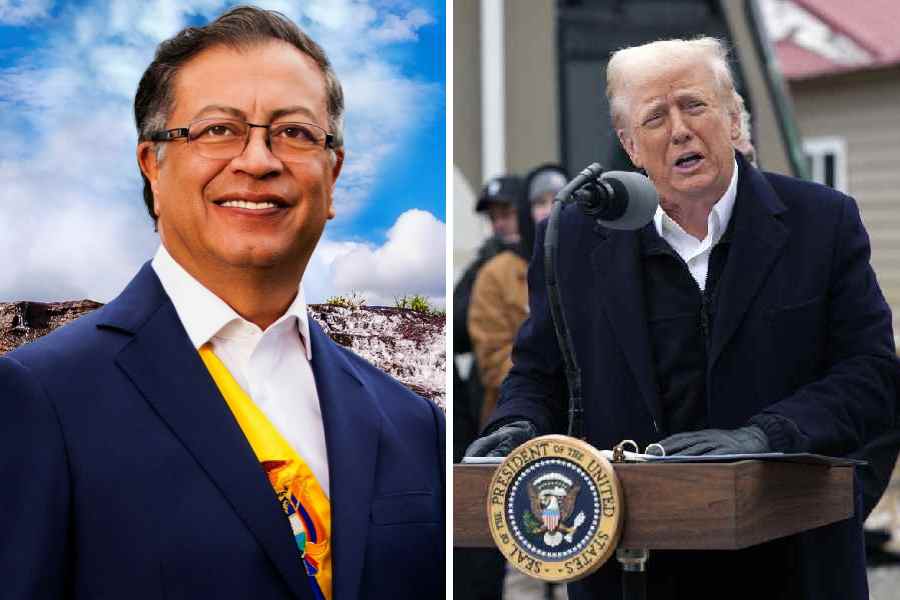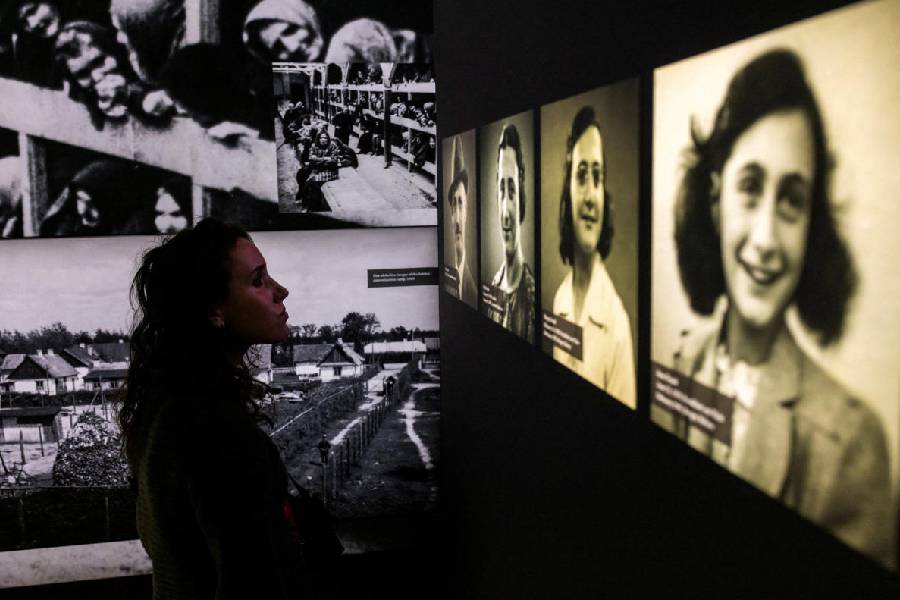A young man takes photographs of the dead for his living at Manikarnika Ghat in Varanasi. But his life will change, as will the city, and the two appear inseparable.
The beautifully shot independent film Barah X Barah, released recently in theatres, tells the story of both. It was shot on celluloid and entirely on location, in March 2019, just before Narendra Modi was to contest from Varanasi for the second time in the Lok Sabha elections, win and be elected Prime Minister for his second term.
At that time the demolition of old buildings in the city for the Kashi Vishwanath corridor was in full swing. But it was not as if the film’s young makers were deliberately searching for any metaphor when they set out.
Director Gaurav Madan and cinematographer Sunny Lahiri, who is also the film’s producer, have co-written the film’s story. It is based on a photographer in Varanasi who took pictures of the dead and whom Lahiri had met.
When Madan and Lahiri decided to make the film, they decided to write the script together. They came to Varanasi in early 2019 and stayed at Manikarnika Ghat.
“We stayed at an inexpensive hotel,” laughs Madan. Barah X Barah is his first directorial venture. “The script got written in eight days,” he adds. Madan lives in Mumbai and Lahiri between Mumbai and the US.
They wanted to make a film that would tell a human story set against the cycle of life and death that Varanasi embodies. “Death here is often a celebration of the life,” says Madan. “The film wanted to land in this spiritual space,” adds Lahiri. But by telling the story of life as it is really lived, away from the cliches that Varanasi is wrapped with.
In the process, the film becomes a telling comment on Modi’s Varanasi, Modi’s India. Perhaps there is nothing more radical than to show how things really are.
The cycle of life and death in Varanasi, its duality of timelessness and being in time is not a cliche or an imaginary landscape; it is a lived reality. The procession of the dead that never ends at Manikarnika Ghat and the funeral fires that never stop burning form a steady backdrop in the film. As do the two banks of the river, one crowded, the other with almost no sign of life and looking vaster, evoking powerfully the philosophy of the film.
At the ghat, Suraj, the photographer in the film, waits patiently with his DSLR camera and calls out to the mourners who are trickling in, offering to take the last photograph of the departed. Not many respond as most are armed with smartphones, which are as good for taking pictures of the dead now as of the living.
Perhaps that is why Suraj, a loving husband and father, and a worried man, does not like being at the ghat too much. He rides on his scooter and goes into the city. We see a Varanasi that is far away from the images of the city as exotic India, or spiritual destiny or a marvel of the new idea of “development”. Modi’s figure is glimpsed on the wall, promising “sabka saath, sabka vikas”.
“From the beginning, we knew the place had to look different from all previous films,” says Lahiri. “We stripped our tourist side. The city is seen from inside.”
The fact that Suraj does not like to hang around his workplace “became a building block for image-making for the film”, allowing forays into the city. And into Suraj’s home, where, too, he spends a lot of time.
He takes his friend to the brothel but waits outside. He shares a loving, passionate relationship with his wife, who struggles as much to make ends meet by sewing in her spare time. He photographs her with his camera and both comment on her beauty.
They are poor, and worried, but live happily with their son. However, there is always a sense of something about to crush them out of their present life because it is not sustainable.
Then it happens. Suraj decides to leave Varanasi with his family. So does his friend, who loses his house to the Kashi Vishwanath corridor. In a moving scene, the friend, before getting on to the boat that takes him away, goes to the rubble that is his house and digs out a dish antenna to carry away with him.
“At our hotel, we had met a gentleman who had taken us to see his demolished house. He had also preserved the dish antenna,” says Madan.
Some Varanasi residents who had not agreed to their houses being demolished at first had to give in because it was not possible for a solitary house to survive among a ruin.
“The film questions the idea of development,” says Lahiri. “Ours is one of the last films to be made that shows an older Varanasi,” he says. Technology can run parallel to such development. So much more has been lost in the last five years, after which Modi has been elected again from Varanasi and become Prime Minister.
The film also questions the normalisation of migration, Lahiri adds. Why is it that in search of a better life one has to leave one’s place of birth? And why is the migration from village to city inevitable? It shows the great polarisation of actual development.
“The life of the protagonist and the city run parallel,” says Madan.
Within the film, the camera moves slowly, lovingly, dwelling on every moment, lingering on expressions, opening out into the vastness of the river and the sky.
The use of celluloid adds a depth that seems stunning to eyes now used to the digital. “Celluloid captures grains. It has a texture. Skin tones are rendered most naturally. The effect is fluid, with blemishes. The images are not so sharp, not so cutthroat,” says Lahiri.
“The world around us is analogue,” he laughs.
In this, the film also offers a parallel to its protagonist and the city.
Actor Gyanendra Tripathi is outstanding as Suraj. Bhumika Dube, Geethika Vidya Ohlyan, Harish Khanna and Akash Sinha are as excellent as the rest of the cast.
As one leaves the theatre, one is filled with sadness. It is not about one’s encounter with mortality. Barah X Barah, shot by looking at death straight, even with humour, yet with a lot of sensitivity, is anything but morbid. The sadness possibly comes from accepting the reality of change. But that also brings the promise of new. The two are inseparable.
May we mention the election verdict of 2024?











